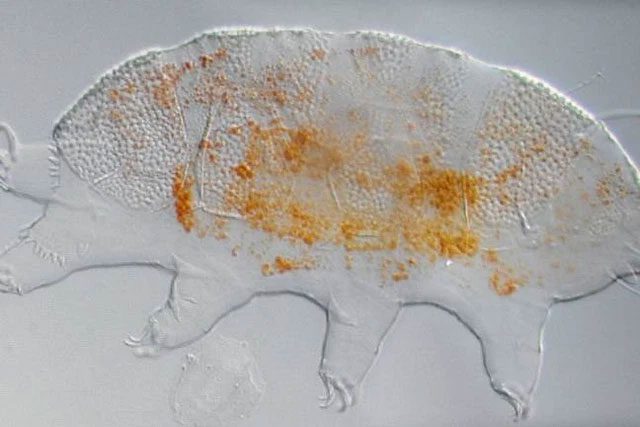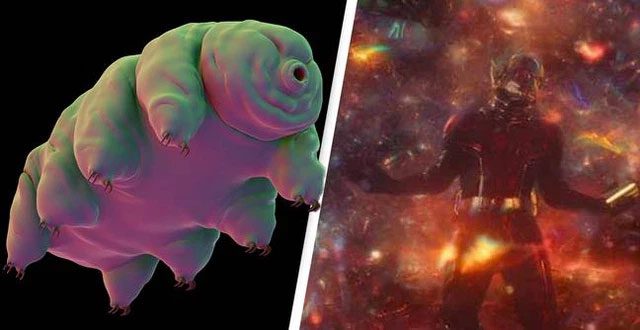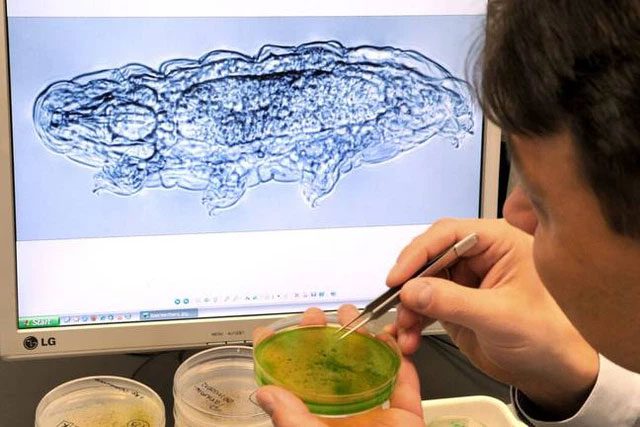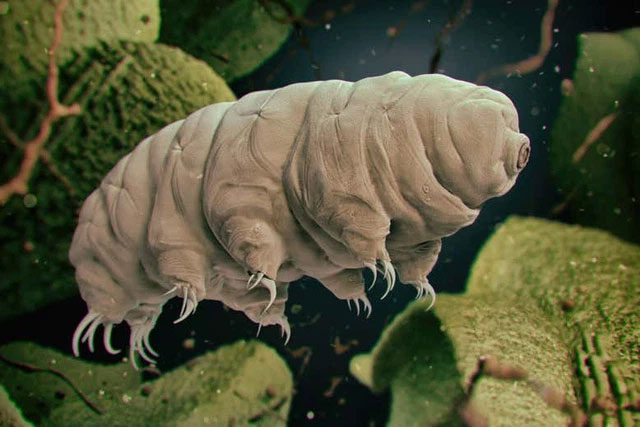Tardigrades – sometimes referred to as water bears or moss piglets due to their incredibly plump and adorable appearance, are not visible to the naked eye, as their body length ranges only from 0.5mm to 1.2mm.
Despite their small size, they are an incredibly resilient species, described by scientists as “indestructible” due to their ability to survive in extreme conditions. They can comfortably inhabit environments with high pressure and extreme temperatures—conditions that could kill or denature most other living organisms.

Water bears are a common name for the phylum Tardigrada, tiny aquatic creatures that belong to the group of microscopic animals with eight legs. Water bears are part of the phylum Tardigrada, which is a component of the superphylum Ecdysozoa. This ancient group has fossils found dating back 530 million years to the Cambrian period.
It is precisely because of this resilience that they have always attracted scientific interest and have been chosen by researchers to undergo a variety of innovative scientific experiments, from being shot out of a gun at speeds of 200 mph (89.4 m/s) to test their survival after impact shocks, to being placed in a vacuum to examine their reactions to the extremes of space.
Now, the tardigrade has officially undergone another challenge by becoming the first multicellular organism to survive quantum entanglement.
For those who haven’t seen Ant-Man, quantum entanglement can be simply explained as a strange phenomenon in quantum mechanics where quantum particles become linked together even if they are separated by vast distances, even light-years apart.

Quantum entanglement, also known as quantum entanglement (vướng víu lượng tử), is an effect developed in quantum mechanics where the quantum state of two or more objects is interconnected, regardless of the distance separating them. The most straightforward example is two electrons placed near each other that can oscillate in the same state, according to quantum theory. Now, if they are separated by several kilometers or even thousands of light-years, they will still maintain this synchronized oscillation connection. This means that if two (or more) particles (or objects) are quantum entangled, when one is affected (for example, by changing its momentum, position, or spin through electromagnetic means), the other particle (or particles) will respond instantly, regardless of the vast spatial distance between them.
In this groundbreaking study, Raimer Dumke from Nanyang Technological University in Singapore successfully placed a tardigrade into a quantum entangled state with a superconducting qubit—and remarkably, it survived this experiment.

Tardigrades have a truly astonishing body that amazes scientists. Whether boiled or frozen, they still survive. They can endure high-pressure environments or even the vacuum of space and withstand cosmic radiation; they continue to exist. They can even revive normally after being frozen for three decades. Additionally, tardigrades can survive without water or food for up to 10 years, even when the water content in their bodies drops below 3%.
This is quite complex and involves cooling the tardigrade down to just 0.01 degrees Celsius above absolute zero—the lowest temperature at which a water bear can survive. Extreme high or low temperatures, radiation, or high pressure all share one thing in common—they destroy DNA and other essential organelles. High temperatures cause proteins to denature, stick together, and become useless. Radiation tears apart DNA and large molecules. High pressure condenses cell membranes.
However, the miraculous thing is that this organism can remain unharmed after undergoing quantum entanglement.
The journal New Scientist reported that this successful experiment is the third time Dumke has attempted this process with tardigrades, and the research team hopes to extend this to other forms of life in the future.

These characteristics make this organism nearly indestructible. Scientists believe that a specific protein found only in the bodies of tardigrades, called Dsup (damage suppressor protein), helps protect their bodies from harm in extreme environments. Dsup binds with chromatin (which are double-stranded DNA and special proteins in the nucleosome structure), creating a “protective cloud” that shields cells from the harmful effects of highly reactive hydroxyl radicals. These molecules arise when exposed to X-rays. Theoretically, it seems that the bonds of Dsup would protect DNA in various types of cells.




















































